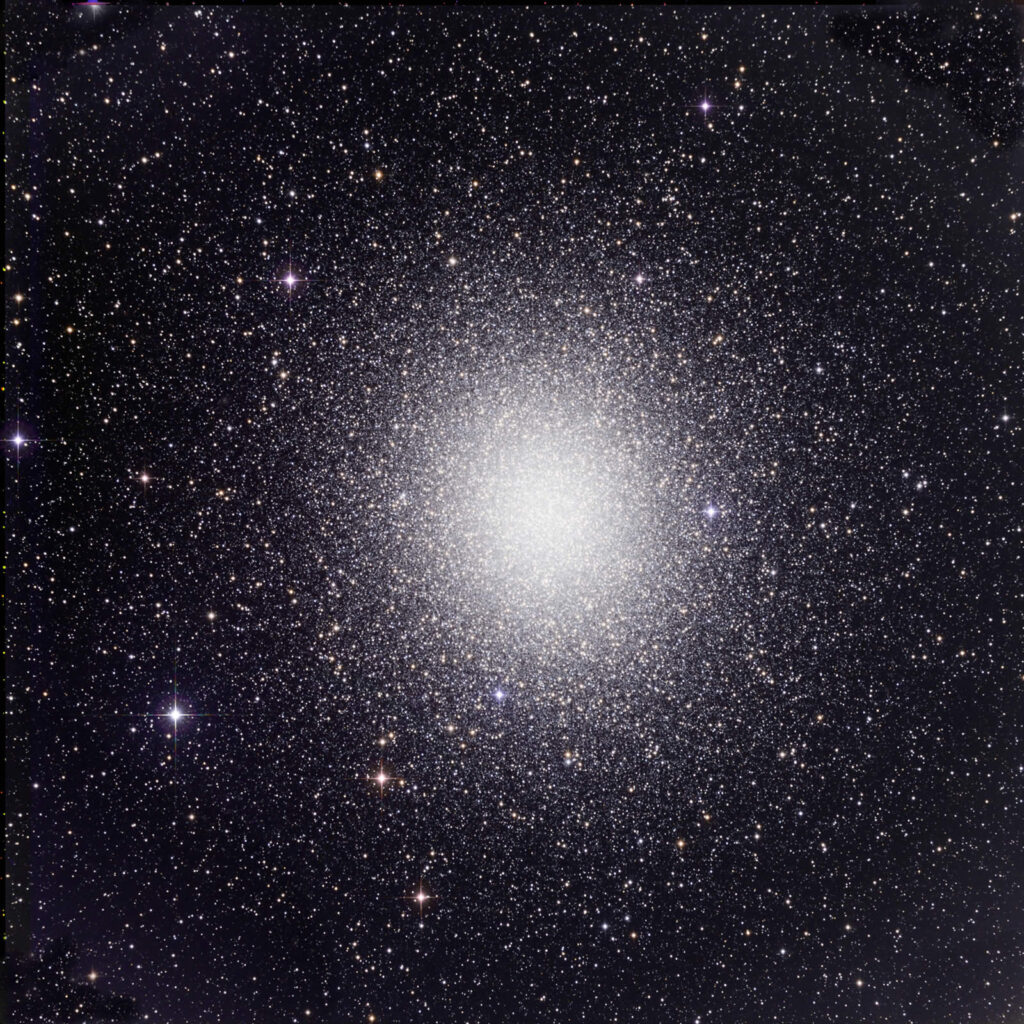The most magnificent example of a "globular" star cluster in our galaxy. The cluster was named by German astronomer Johann Bayer in his catalog of the brightest 1,564 stars, the "Uranometria," published in 1603. Bayer's star names were straightforward. He would assign a lower case Greek letter to stars in a constellation, beginning with the brightest, followed by the genitive form of the constellation name. To illustrate, the brightest star in the constellation Centaurus is "alpha Centauri" (literally, "alpha of Centaurus"). The second brightest is beta Centauri, and so on.
Bayer's catalog was compiled six years before Galileo first pointed a telescope at the heavens, and so he could not know that this magnificent star cluster was not a star. Since it appeared to be the 24th brightest "star" in the constellation, Bayer's catalog identified it by the 24th and last letter of the Greek alphabet, omega (hence, "Omega Centauri"). Edmond Halley discovered the true nature of this "star" in 1677, but the name has never been changed.
Globular star clusters are tightly compacted groups of hundreds of thousands of stars, in contrast to the far more common "open" or galactic star cluster that contain a few dozen to 1,000 or more stars that are less densely arrayed. Omega Centauri is the largest known globular cluster in our galaxy, consisting of several million stars at a distance of 15,800 light years. It is some ten times larger than any other globular cluster in our galaxy, which has caused some astronomers to speculate that it is the core of a dwarf galaxy that was absorbed by our galaxy long ago. The stellar density in the core is an estimated one thousand stars per cubic light year (average separation of .1 light year between stars). Contrast this with the closest known star to our Sun, proxima Centauri, at a distance of 4.2 light years.
Omega Centauri is a southern hemisphere object, and is visible only in the southern portion of the United States in the Spring and Summer, when it can be seen near the southern horizon.
It is also of interest that Omega Centauri lies along the Milky Way (the center of our Milky Way galaxy). This is evident by the large number of stars in the field of this cluster.
The Omega Centaurus Cluster
Date Taken:April 28, 2014
Location Taken:Siding Spring Observatory, NSW Australia
Conditions of Location: Equipment Used:Planewave 20" corrected Dall-Kirkham telescope, FLI PL09000 camera
Processing Used:This image represents 12 x 3-minute luminance images, and 8 x 3-minute red, green, and blue images for a total image duration of 1 hour and 48 minutes.
Distance from Location:15,800 light years
Constellation:Centaurus
Other Link:

Wow that’s incredible!!